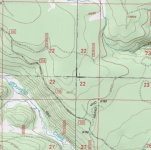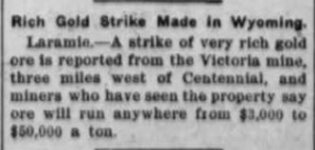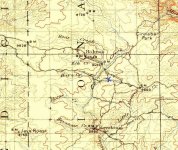This story is from the Medicine Bow Mountain region, down around Albany County. I first heard of this one from Thomas P. Terry's brief mention of the Lost Downey Mine. I will post what I currently have on it, but then we might be adding to it since I am still researching the state. I do have to wonder if this mine was ever lost. Or if the vein pinched out. It will take a few posts to complete.
The Lost Downey Mine
It was during the 1870’s, when a man named Stephen Downey worked a mysterious gold deposit somewhere along the North Fork in Albany County, Wyoming. It is claimed that he was offered $100,000 for his claim, but refused the offer. Then, one day, out of the blue, Downey told locals that his mine was exhausted and he moved away. No one really believed his rich mine suddenly was of no value and they tried to find it.





